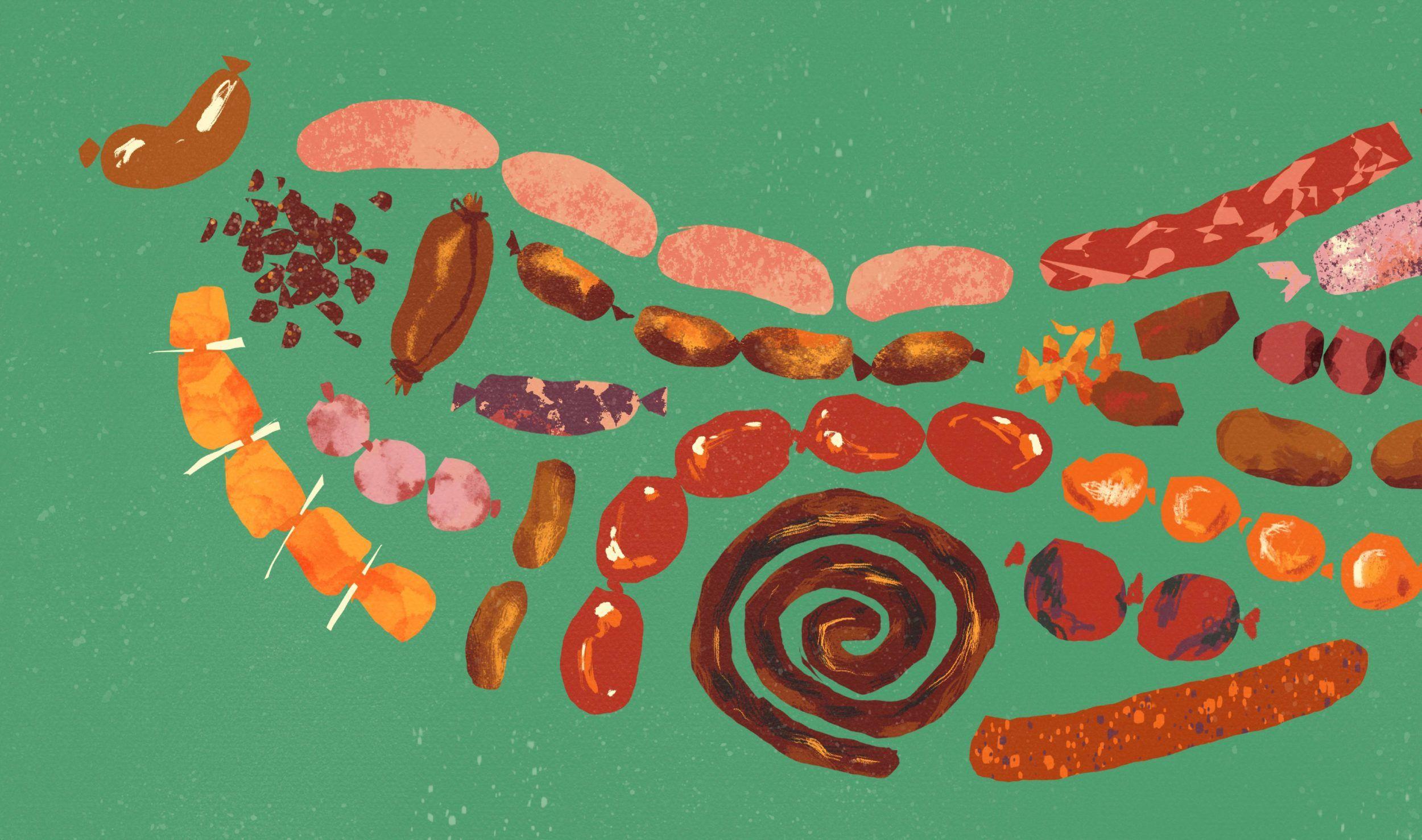We can lump simply lump them all into general categories. But if you haven’t noticed, there are multiple types of chorizo and longganisa, differing in flavor, color, texture, and even shape. Go to each province or city, and they’re bound to be hawking a version of the sausage of their own. This guide aims to give light to some of the most well-known ones. We’ve already collected 22 of them for this list—and we’re pretty sure we’ve only scratched the surface.
Longganisa vs Chorizo: What’s the Difference?
First thing’s first, we have to answer the age-old question, “What’s the difference between chorizo and longganisa anyway?” Well, based on our research, what sets these two apart primarily falls on three things: the meat, the spices, and the method in which they’re made.
Meat
Though similar, chorizo and longganisa are made from different meats; they also differ in the cut that’s in there. Chorizo is made from ground pork (with bits of fat), while longganisa is made from minced meat.
Spices
The spices in different types of chorizo and longganisa vary. But generally, chorizo is spiced with paprika, while longganisa is spiced with black pepper. Additional spices can be added depending on the intended flavor profile, e.g. if it’s meant to be extra spicy.
Method
Both chorizo and longganisa can be fresh or cured, and knowing this helps to know if you can eat it straight off the pack or if you need to cook it. However, chorizo usually comes in casings (though some longganisa come in casings, too!). These are edible, but if you need to mash your chorizo, you’ll likely need to take them out.
Types of Longganisa and Chorizo
Now that we have a general idea about the differences between the two, let’s deep dive into several types of chorizo and longganisa in the Philippines.
Calumpit, Bulacan
Calumpit longganisa from Bulacan is generally known as longganisang bawang, but this only refers to the recado variant. It also comes as hamonado, which is sweeter. Both versions are similar in size, but they differ in color.
The recado is brown (soy sauce), while the hamonado is red (food coloring). Makers usually hand-chop the meat and include chunks of fat in the longganisa.
Candaba, Pampanga
Candaba longganisa is air-dried for two to three days, giving it a mildly sweet, slightly sour, and salty flavor profile. It’s chunky, and has a natural meaty texture.
Bacolod, Negros Occidental
Also called chorizo Negrense or chorizo de Bacolod, this Ilonggo chorizo typically comes as pudpud which means that it doesn’t have a casing (i.e. skinless). It uses finely ground meat with no chunky fat. And it’s flavored with a lot of garlic and paprika, giving it a pungent and spice-y flavor that’s balanced out with calamansi and vinegar. You can buy them in glass bottles, either as hamonado(sweet) or recado (garlicky).
Cavite
Cavite longganisa is a cross between hamonado and recado; it’s salty, garlicky, and mildly sweet. The Imus variety contains a blend of soy sauce, vinegar, annatto, and black pepper, giving the sausage a good balance of sour and salty flavors; it’s also made of mostly lean pork.
Cabanatuan, Nueva Ecija
You might’ve heard of Cabanatuan’s infamous “batutay.” This chunky longganisa, which is only available in Nueva Ecija, is made of beef. This gives it a distinct flavor matched by a sweet taste. You can get them as 4-inch pieces now, but they used to be sold longer.
Guinobatan, Albay
Guinobatan longganisa are tied with abaca strips, then air-dried for several days. It’s generally a bit salty and sour, but its hamonado and recado variants have slight differences. The hamonado has an artificial red color and plenty of fat in the filling. Meanwhile, the recado is brown-ish thanks to the soy sauce; it’s also much leaner and has a garlicky profile. It’s short and thin, almost similar to Guagua longganisa.
When cooked, the casing of the longganisa gets tough because it’s synthetic. But the chunky meat—with generous additions of pork fat—make up for it.
Alaminos, Pangasinan
Alaminos longganisa (aka Pangasian longganisa) originates from Alaminos City, Pangasinan. This version is salty and garlicky, and it comes with a distinct deep orange hue thanks to atsuete. The small stubby links are pinned with tingtings (mature coconut sticks), which are yes—the same material used to make walis tingting.
Cebu
Chorizo de Cebu is round and plump (and so fat, sweet, and juicy); it has a distinct red color thanks to the atsuete used. You can cook it by boiling it until all the water has evaporated, then waiting for the chorizo to cook in its own rendered fat. You can also just simply grill it. People commonly eat chorizo de Cebu with “puso” or “tamu” (hanging rice), which is rice wrapped and boiled in woven palm leaves.
Guagua, Pampanga
Guagua longganisa is similar to Candaba longganisa, so much so that they’re often lumped together. But both have slight differences. This one is a bit sweet, salty, and sour thanks to the natural curing process used to make it. It’s short and thin, then shrinks down to a tiny size when cooked. Locals recommend boiling it first, then frying it in its own fat; this will help crisp up its natural casing.
Baguio
You can’t go to Baguio without buying their local longganisa, which you often find hung outside kiosks at the wet market. Also called “shortganisa,” it’s small and round; you can buy them as either hamonado or recado.
